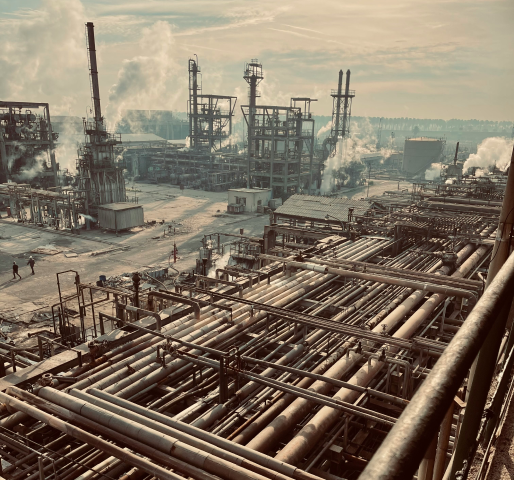The international fuel trade plays a pivotal role in the global energy market. It involves the exchange of various types of fuels, including oil, natural gas, and coal, among countries around the world. This trade is crucial for meeting the energy needs of countries that lack sufficient domestic energy resources and for allowing countries with abundant energy resources to export their surplus.
The global fuel trade is a complex system involving numerous key components, major players, and a variety of fuel types.
Key Components The international trade of fuel is heavily dependent on the physical transport of goods. The price of fuel is linked to crude oil market supply dynamics and impacted by demand dynamics such as shipping and air freight. Trade policy at national, regional, and international levels can accelerate the energy transition and contribute to improving market access conditions, harmonizing regulations, phasing out inefficient fossil fuel subsidies, and ensuring the distribution of environmental goods and services.
Major Players Countries and companies play significant roles in the international fuel trade. OPEC, a group of oil-rich countries, controls nearly 40% of the world’s oil supply. The largest oil and gas companies include Saudi Aramco, ExxonMobil, Chevron, Shell, PetroChina, TotalEnergies, Gazprom, and others.
Types of Fuels Traded Various types of fuels are traded internationally, including oil, natural gas, and coal5. Crude oil products are traded based on established chemical profiles, delivery locations, and financial terms. Jet fuel is also a significant part of the international fuel trade.
Several organizations influence the international fuel trade. The Organization of the Petroleum Exporting Countries (OPEC) aims to regulate global oil prices by coordinating on reductions or increases in production. The International Energy Agency (IEA) tracks and analyzes global key energy trends, promotes sound energy policy, and fosters multinational energy technology cooperation. Other organizations, including the Organisation for Economic Co-operation and Development (OECD), the World Bank, the International Monetary Fund (IMF), and the Asian Development Bank, support countries in developing strategies for fuel subsidy reform.
Geopolitical Factors
Geopolitical factors play a significant role in shaping the international fuel trade. Political relations, sanctions, and conflicts can greatly affect fuel trade routes and availability.
For instance, ongoing tensions in key oil-producing regions can disrupt oil supply chains and lead to fluctuations in fuel prices. The war in Ukraine, for example, has significantly reshaped the world’s fuel markets. Russia, as the world’s second-largest producer of oil and natural gas, supplies much of the world with energy. The conflict has caused uncertainty, leading to dramatic increases in oil prices.

Regulatory Challenges
The regulatory environment for fuel trade varies across different regions and includes environmental regulations and trade tariffs. These regulations can impact trade routes and fuel prices.
For example, the European Union’s ‘Fit for 55’ package aims to reduce the EU’s net greenhouse gas emissions by at least 55% by 2030. This package includes several measures aimed at reducing emissions from shipping and encouraging the use of less GHG-intensive marine fuels. Such regulations can increase the complexity for shipping companies and impact global fuel prices.
Moreover, environmental regulations can also affect the types of fuels traded. As countries around the world seek to limit their carbon emissions, sustainable fuels are playing an increasingly important role. However, the sustainable fuel market is still nascent and characterized by complex regulations and interdependencies across sectors.
In conclusion, both geopolitical factors and regulatory challenges significantly influence the international fuel trade. Understanding these complexities is crucial for navigating this dynamic landscape.
- Logistical and Operational Challenges: Transporting fuels internationally presents numerous logistical challenges, including maritime, pipeline, and rail logistics. These challenges are influenced by a variety of factors, such as infrastructure constraints, data and communication incompatibility, and cost management. Each country and region has its specific elements of peculiarity, leading to a great variety of domestic logistics systems which, combined, have to be orchestrated in a global network.
Companies navigate these challenges through several strategies. One common approach is the use of advanced route optimization software and real-time traffic data to make informed decisions. These tools help logistics professionals identify the most efficient routes, minimize fuel consumption, and meet customer expectations for timely deliveries while reducing operational expenses. Other strategies include diversifying fleets and investing in infrastructure.
- Price Volatility and Risk Management Fuel price volatility is primarily caused by the cost of crude oil, which made up 55% of the cost of a gallon of gas over the last decade. Other factors contributing to price volatility include geopolitical conflicts, political instability, production costs, and supply and demand dynamics.
The volatility of fuel prices can have significant impacts on international trade. Sharp, rapid swings in the price of oil can have outsized effects on companies, economies, and global geopolitics. For instance, increasing international crude oil prices create a current account surplus for oil-exporting countries and a current account deficit for oil-importing countries, leading to a redistribution of wealth that could affect the exchange rate.
To manage the risks associated with price fluctuations, companies employ various strategies. These include forecasting future gas price trends to better allocate resources and adjust budgets accordingly, utilizing industry data and trend analysis to make informed decisions about fuel consumption, managing inventory, contracts, and logistics proactively in response to changing prices, and using financial instruments like futures contracts and hedging.

Navigating Trade Agreements and Partnerships
Trade agreements play a significant role in facilitating or impeding international fuel trade. They can help accelerate the energy transition, improve market access conditions, harmonize regulations, phase out inefficient fossil fuel subsidies, and ensure the distribution of environmental goods and services. However, they could also remove tariffs, harmonize standards on environmental goods, and eliminate distorting subsidies on fossil fuels.
Successful partnerships and alliances have been formed to overcome trade barriers. These strategic alliances provide businesses with a competitive edge, enhanced market reach, and access to valuable resources. They open doors to new opportunities and fuel success in the global marketplace.

Future Trends and Predictions
Emerging trends in the international fuel trade include the decentralization of supply chains and increased demand in emerging markets. The oil and gas industry is expected to uphold capital discipline and prioritize viable low-carbon projects to successfully navigate the changing energy demand landscape.
Predictions for the evolution of the fuel trade landscape are influenced by a variety of factors, including technology trends, geopolitical risk, and consumer behavior. Despite significant reductions in carbon emissions, all energy transition scenarios remain above the 1.5° pathway and result in warming of between 1.6° and 2.9°C. Fossil fuel demand is projected to peak by 2030 in all scenarios. Although a sharp decline in coal demand is expected under all scenarios, natural gas and oil are expected to grow further in the next few years and then remain a core part of the world’s energy mix for decades to come.

In conclusion, navigating the complexities of international fuel trade requires agility, innovation, and strategic planning. The key points discussed in this blog post highlight the multifaceted nature of the fuel trade, including geopolitical factors, regulatory challenges, logistical and operational hurdles, price volatility, and risk management strategies.
The role of trade agreements and partnerships in facilitating or impeding international fuel trade was also discussed, along with emerging trends and predictions for the future of the fuel trade. The shift towards renewable energy sources and the impact of technological advances on fuel trade logistics and operations were also highlighted.
The complexities of the international fuel trade present both challenges and opportunities. Stakeholders in the fuel trade sector are encouraged to engage in further discussion and take action to navigate these complexities effectively. By doing so, they can contribute to a more sustainable and efficient global energy market.
Understanding these complexities is crucial for effectively navigating the international fuel trade. As the global energy landscape continues to evolve, stakeholders in the fuel trade sector must remain agile and innovative, ready to adapt to changing circumstances and seize new opportunities.


